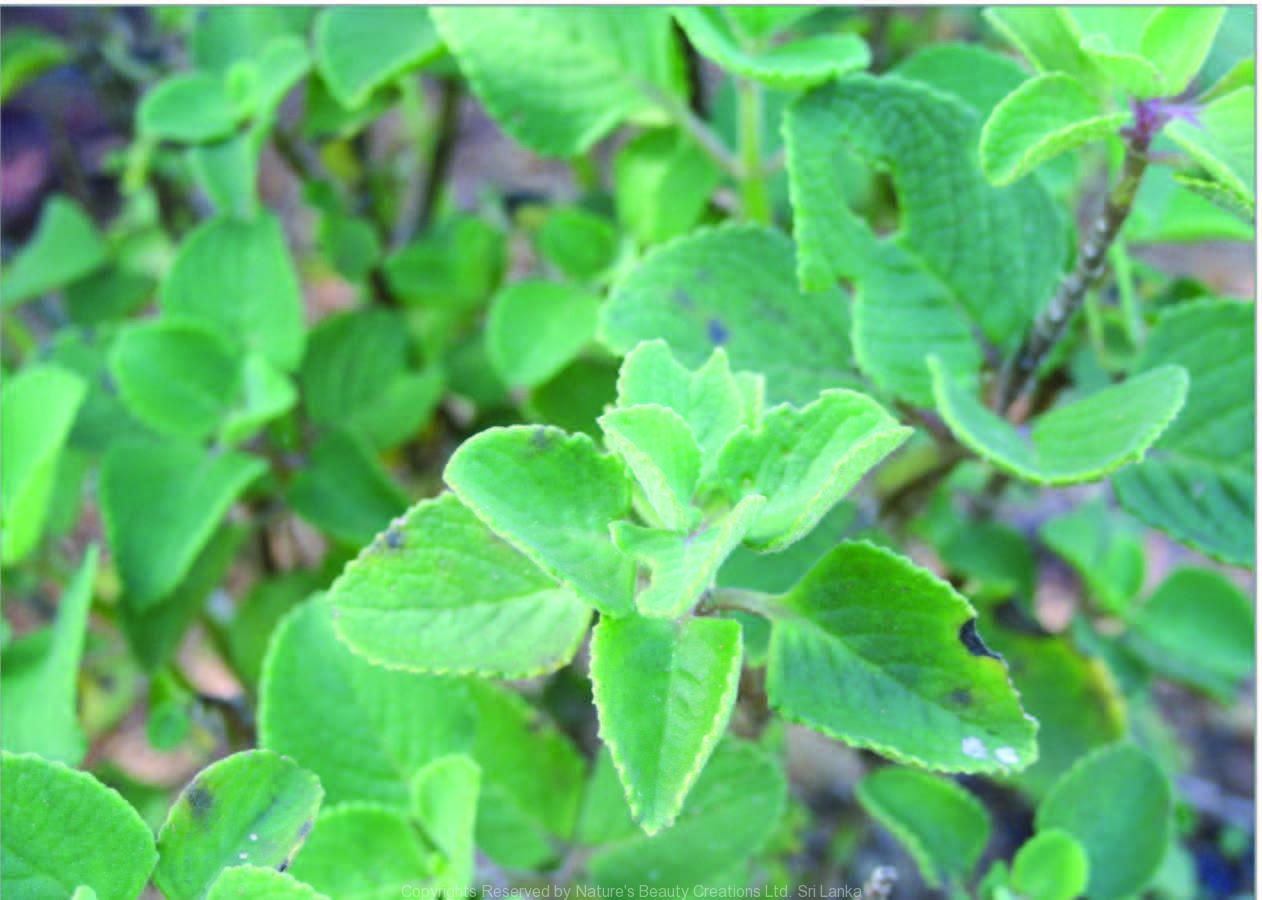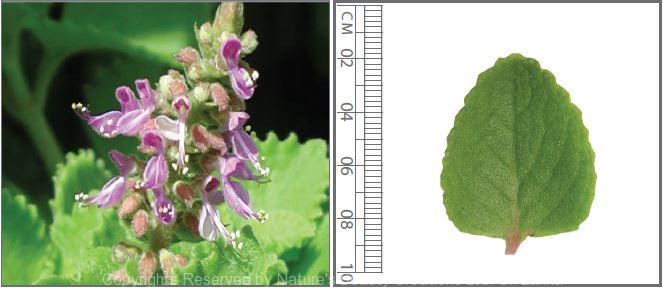

Traditional Knowledge
Useful plant parts :
Leaf and aerial part
Uses in traditional medicine :
- One table spoon of fresh leaf juice is taken after meals for respiratory disorders including cough and asthmatic conditions
- Syrup prepared of fresh aerial parts in black sugarcane juice and mixed with ginger is taken for bronchial complications
- Used to treat epilepsy, dyspepsia, diarrhoea, dysentery, flatulence, colic, urinary diseases, abnormal vaginal discharges, heart and stomach pains
Scientific Research
Chemical constituents:
Terpenes: carvacrol, thymol, α-humulene, undecanal, γ-terpinene, ρ-cymene, caryophyllene oxide, α-terpineol and β-selinene from oil of leaves
Bioactivity :
Aqueous extract of whole plant: antineoplastic, antiarthritic, analgaesic, anti-inflammatory, antihyperglycaemic, antihyperlipidaemic, nephroprotective and antioxidative; hydroalcohol extract of leaves: diuretic, anti-inflammatory, antitumour; essential oil of leaves: larvicidal against malaria mosquito vector; fresh juice of the leaves: antilithiotic
Clinical:
Cream containing Plectranthus ambonicus and Centella asiatica is applied to treat diabetic foot ulcers
References : Brandao, E. M. et al., (2013), Antineoplasic effect of aqueous extract of Plectranthus amboinicus in ehrlich ascites carcinoma, J Cancer, 4(7), 573-6. Chang, J. M., (2010), Potential Use of Plectranthus amboinicus in the Treatment of Rheumatoid Arthritis, Evidence-Based Complementary and Alternative Medicine, 7(1), 115–120. Chiu, Y. J. et al., (2012), Analgesic and Antiinflammatory Activities of the Aqueous Extract from Plectranthus amboinicus (Lour.) Spreng. Both In Vitro and In Vivo, Evid Based Complement Alternat Med. Gurgel, A. P. et al., (2009), In vivo study of the anti-inflammatory and antitumor activities of leaves from Plectranthus amboinicus (Lour.) Spreng (Lamiaceae), J Ethnopharmacolgy, 125(2), 361-3. Jose, M. A. et al., (2005), Modulatory effect of Plectranthus amboinicus Lour. on ethylene glycol-induced nephrolithiasis in rats, Indian Journal of Pharmacology, 37(1), 43-44. Kuo, Y. S. et al., (2012), Plectranthus amboinicus and Centella asiatica Cream for the Treatment of Diabetic Foot Ulcers, Evid Based Comple- ment Alternat Med. Lukhoba, C. W. et al., (2006), Plectranthus: A review of ethnobotanical uses, Journal of Ethnopharmacology, 103, 1–24. Mogib, M. A. et al., (2002), Chemistry of the Genus Plectranthus, Molecules, 7, 271-301. Palani, S. et al., (2010), Evaluation of nephroprotective, diuretic, and antioxidant activities of Plectranthus amboinicus on acetaminophen- induced nephrotoxic rats, Toxicol Mech Methods, 20(4), 213-21. Patel, R. et al., (2010), Diuretic activity of leaves of Plectranthus amboinicus (Lour) Spreng in male albino rats, Pharmacognosy Research, 2(2), 86–88. Senthilkumar, A. and Venkatesalu, V., (2010), Chemical composition and larvicidal activity of the essential oil of Plectranthus amboinicus (Lour.) Spreng against Anopheles stephensi: a malarial vector mosquito, Parasitology Research, 107, 1275–1278. Viswanathaswamy, A. H. et al., (2011), Antihyperglycemic and antihyperlipidemic activity of Plectranthus amboinicus on normal and alloxan-induced diabetic rats, Indian J Pharm Sci, 73(2), 139-45.
Copyrights Reserved By
Natures Beauty Creations




